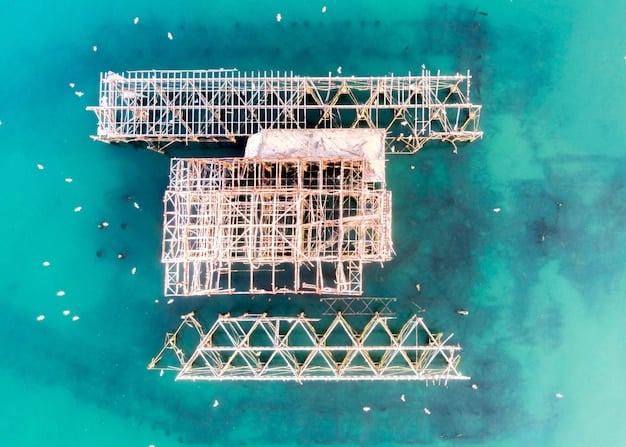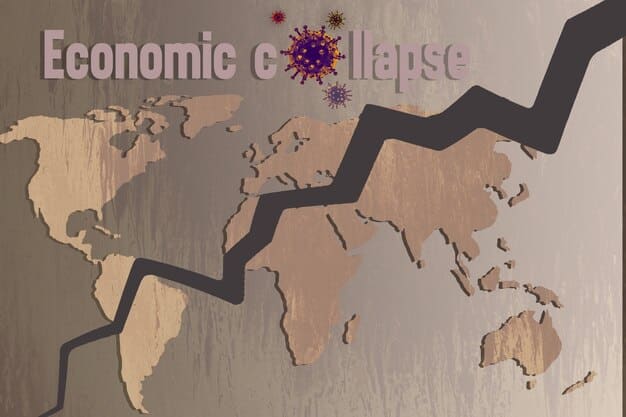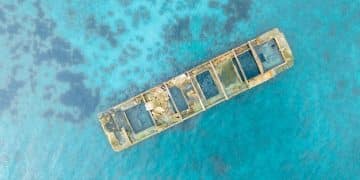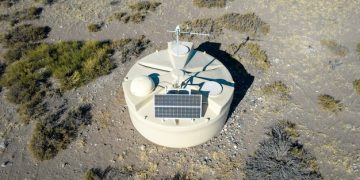Benefits and Risks: US Investment in Foreign Infrastructure

Increased US investment in foreign infrastructure projects can drive economic growth and strategic influence abroad, but also poses risks, including financial losses, geopolitical complications, and concerns over sustainability and labor standards.
The decision to increase US investment in foreign infrastructure projects is a complex one, fraught with both enticing opportunities and potential pitfalls. Exploring what are the potential benefits and risks of increased US investment in foreign infrastructure projects is crucial for policymakers, investors, and citizens alike, as it shapes not only economic outcomes but also geopolitical dynamics and global sustainability.
Understanding the Allure: Potential Benefits
Investing in foreign infrastructure can be a strategic move for the US, offering a range of advantages that extend beyond mere financial returns. These benefits can be categorized into economic, strategic, and diplomatic spheres, each contributing to a stronger and more influential US presence on the global stage.
Economic Growth and Job Creation
One of the primary benefits is the stimulation of economic growth both in the host country and potentially in the US. Infrastructure projects create jobs, increase trade, and improve overall economic productivity, which can translate into increased demand for US goods and services.
Strategic Influence and Geopolitical Positioning
Infrastructure investments can also enhance US strategic influence by fostering closer ties with partner nations. By supporting critical infrastructure development, the US can position itself as a reliable and beneficial partner, countering the influence of other global powers.

Furthermore, US involvement can ensure that projects adhere to higher environmental and labor standards, promoting sustainable development and responsible practices in the host country.
- Improved Infrastructure: Enhances transportation, energy, and communication networks in developing countries.
- Increased Trade: Facilitates the movement of goods and services, benefiting both the US and host country economies.
- Enhanced Security: Bolsters the stability of partner nations, contributing to a more secure global environment.
- Sustainable Development: Promotes environmentally sound and socially responsible infrastructure projects.
In summary, the potential benefits of increased US investment in foreign infrastructure projects are numerous and far-reaching. From fostering economic growth and job creation to enhancing strategic influence and promoting sustainable development, these investments offer a pathway towards a more prosperous and secure global future.
Navigating the Minefield: Potential Risks
While the potential benefits are considerable, increased US investment in foreign infrastructure is not without its risks. These risks can range from financial losses and geopolitical complications to concerns about sustainability and labor standards. A thorough understanding of these potential downsides is crucial for making informed decisions and mitigating potential negative impacts.
Financial Risks and Return on Investment
One of the primary concerns is the risk of financial losses. Infrastructure projects are often complex and capital-intensive, subject to cost overruns, delays, and unforeseen challenges. Political instability, corruption, and currency fluctuations can further jeopardize the return on investment.
Geopolitical Risks and Security Concerns
Infrastructure projects can also become entangled in geopolitical tensions. Competing interests, rivalries, and security concerns can undermine projects, leading to delays, disruptions, or even outright cancellation. Projects may also inadvertently benefit adversaries or contribute to regional instability.

Moreover, US involvement in foreign infrastructure can raise concerns about sovereignty and national security, both in the host country and in the US. Projects may be perceived as attempts to exert undue influence or to gain access to sensitive information or resources.
- Economic Volatility: Fluctuations in global markets can impact project financing and profitability.
- Political Instability: Changes in government or political unrest can disrupt project implementation.
- Environmental Impact: Infrastructure projects can have significant environmental consequences if not properly managed.
- Social Disruption: Projects can displace communities, exacerbate social inequalities, and lead to conflicts.
In conclusion, navigating the minefield of potential risks requires careful planning, due diligence, and risk mitigation strategies. Only by addressing these challenges head-on can the US ensure that its investments in foreign infrastructure yield positive outcomes for both itself and its partner nations.
Balancing Act: Weighing the Advantages and Disadvantages
Assessing the potential impacts of increased US investment in foreign infrastructure projects requires a comprehensive approach that balances the advantages and disadvantages, with a nuanced understanding of the diverse factors at play.
Economic Considerations
On the economic front, it’s crucial to assess the potential for increased trade, job creation, and economic growth, both in the US and in the host country. However, these benefits must be weighed against the risks of financial losses, currency fluctuations, and economic volatility.
Geopolitical Implications
Geopolitically, infrastructure investments can enhance US influence and foster closer ties with partner nations. However, these investments can also become entangled in geopolitical tensions, raising concerns about sovereignty and national security.
By carefully weighing these factors, policymakers and investors can make informed decisions that maximize the benefits of increased US investment in foreign infrastructure while minimizing the potential risks.
Case Studies: Lessons from Past Projects
Examining case studies of past US investments in foreign infrastructure projects can provide valuable insights and lessons learned. Success stories can highlight best practices and effective strategies, while failures can serve as cautionary tales, identifying potential pitfalls and challenges.
Success Story: The Panama Canal Expansion
The US involvement in the Panama Canal expansion project is often cited as a success story. The expansion significantly increased the canal’s capacity, facilitating trade and boosting economic growth in the region. The project also demonstrated the US commitment to infrastructure development and its ability to work effectively with partner nations.
Cautionary Tale: The Hambantota Port in Sri Lanka
Conversely, the Hambantota Port project in Sri Lanka serves as a cautionary tale. Financed by Chinese loans, the port struggled to attract sufficient traffic, leading to financial difficulties and ultimately forcing Sri Lanka to lease the port to a Chinese company. This case highlights the risks of unsustainable financing, lack of economic viability, and potential geopolitical implications.
Studying these and other case studies can provide valuable lessons for future US investments in foreign infrastructure, helping to ensure that projects are well-planned, financially sustainable, and aligned with US strategic interests.
The Role of Due Diligence and Risk Mitigation
Effective due diligence and risk mitigation strategies are essential for maximizing the benefits and minimizing the risks of US investment in foreign infrastructure projects. This involves thoroughly assessing potential projects, identifying potential risks, and developing strategies to mitigate those risks.
Comprehensive Project Assessment
A comprehensive project assessment should include a detailed analysis of the economic, financial, environmental, social, and political factors at play. This assessment should involve input from experts in various fields, including economics, finance, engineering, and political science.
Robust Risk Mitigation Strategies
Risk mitigation strategies should address a range of potential risks, including financial losses, political instability, environmental damage, and social disruption. These strategies may include insurance, hedging, and diversification, as well as measures to promote transparency, accountability, and good governance.
By implementing robust due diligence and risk mitigation strategies, the US can increase the likelihood of successful infrastructure investments that contribute to economic growth, strategic influence, and global stability.
Sustainable Development Goals and Global Impact
Increased US investment in foreign infrastructure projects can play a significant role in advancing the United Nations’ Sustainable Development Goals (SDGs). Infrastructure development is crucial for achieving many of the SDGs, including those related to poverty reduction, economic growth, clean energy, and sustainable cities.
Supporting Sustainable Development
Investments in renewable energy, water and sanitation, and transportation infrastructure can contribute to a more sustainable and equitable world. By prioritizing projects that align with the SDGs, the US can demonstrate its commitment to global development and its willingness to work with partner nations to address pressing global challenges.
Impacting Communities
Projects that prioritize environmental sustainability and social inclusion can have a positive impact on local communities, promoting economic empowerment, reducing inequality, and protecting the environment. These investments can also foster trust and goodwill, strengthening relationships between the US and partner nations.
| Key Point | Brief Description |
|---|---|
| 🌍 Economic Growth | Boosts trade and productivity in both the US and partner countries. |
| ⚠️ Financial Risks | Potential for losses from instability and currency fluctuations. |
| 🤝 Strategic Influence | Strengthens ties and counters other global powers. |
| 🌱 Sustainable Goals | Supports UN SDGs like clean energy and reduced poverty. |
FAQ Section
▼
Projects often include transportation (roads, railways, ports), energy (power plants, renewable energy), water and sanitation, and telecommunications. These aim to improve essential services and connectivity.
▼
Recipient countries benefit from improved infrastructure, which can lead to economic growth, job creation, better public services, and enhanced trade opportunities. It also supports sustainable development.
▼
Drawbacks include potential debt burdens, dependency on foreign assistance, environmental impacts, and displacement of local communities. Projects need careful management to avoid these issues.
▼
The US can gain strategic influence, promote its economic interests, create demand for US goods and services, and foster political stability in key regions. It can also enhance its global image.
▼
Due diligence, risk assessments, environmental impact studies, and adherence to international standards help mitigate risks. Transparency, accountability, and stakeholder engagement are also crucial.
Conclusion
In conclusion, increased US investment in foreign infrastructure projects presents both substantial opportunities and significant challenges. By carefully weighing the potential benefits and risks, implementing robust due diligence and risk mitigation strategies, and prioritizing projects aligned with the Sustainable Development Goals, the US can ensure that its investments contribute to a more prosperous, secure, and sustainable global future.





